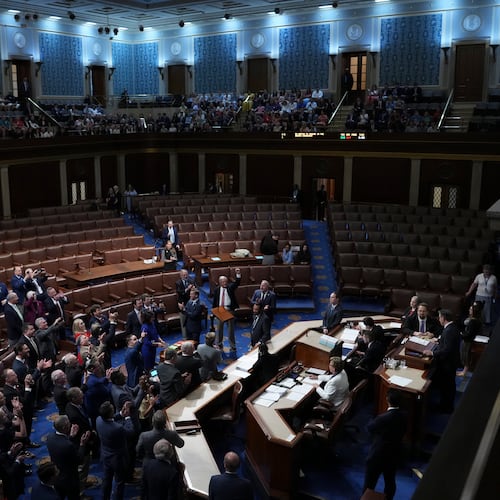In the past seven years, the number of Americans who describe themselves as Christian has dropped by five million people, even as the nation’s overall population grew, according to a survey of more than 35,000 Americans conducted by the Pew Research Center. The number of “religiously unaffiliated” Americans jumped by 19.7 million.
Not surprisingly, the South still boasts the highest percentage of Christians and the lowest percentage of religiously unaffiliated. But our region is hardly immune to the underlying trend. In 2014, 19 percent of Southerners said they had no religious affiliation, a jump from 13 percent just seven years earlier. At that rate, the religiously unaffiliated will become a majority here in the South in a little more than a generation.
Overall, the percentage of Americans who describe themselves as Protestant dropped 4.8 points since 2007, the last time that Pew conducted such a major survey. The percentage of evangelical Christians was more stable, dropping by just 0.9 percent, but “the share of evangelical Protestants who identify with Baptist denominations has shrunk from 41 percent to 36 percent.”
The news looks particularly dire for American Catholics:
“Nearly one-third of American adults (31.7 percent) say they were raised Catholic,” Pew reports. “Among that group, fully 41 percent no longer identify with Catholicism. This means that 12.9 percent of American adults are former Catholics, while just 2 percent of U.S. adults have converted to Catholicism from another religious tradition. No other religious group in the survey has such a lopsided ratio of losses to gains.”
And again, these changes have occurred over a seven-year period, a relative blink of an eye in the time frame in which such trends normally play out.
The change is being driven primarily by young people of every race, education and income subgroup. As older, more religious Americans die, they are replaced by grandchildren and great-grandchildren who are less likely to share their faith. Or as Pew bluntly describes the process, “generational replacement.” Among millennials — those born between 1980 and 1996 — barely half identify as Christian.
Such data express in hard numbers what many religious leaders witness from their pulpits: empty pews and gray heads. It also helps to explain the growing sense among some Christian faiths that they are under attack by unseen forces. But to the degree that they identify their enemy as governmental or political in nature, I suspect they badly misread the situation.
The primary threat faced by religion in general and the Christian faith in particular does not come in the form of gay people who wish to marry and need a wedding cake, or of Obamacare contraceptive requirements. Nor can it be fixed with something as mundane as a “religious freedom amendment.” Those are simply means by which the blame can be projected onto secular forces and away from where it really lies.
The greatest threat to the valuable role played by faith in American life is that fewer and fewer young Americans find value and connection in places of worship. And that is not caused by — and cannot be cured by — government.
About the Author
Keep Reading
The Latest
Featured


